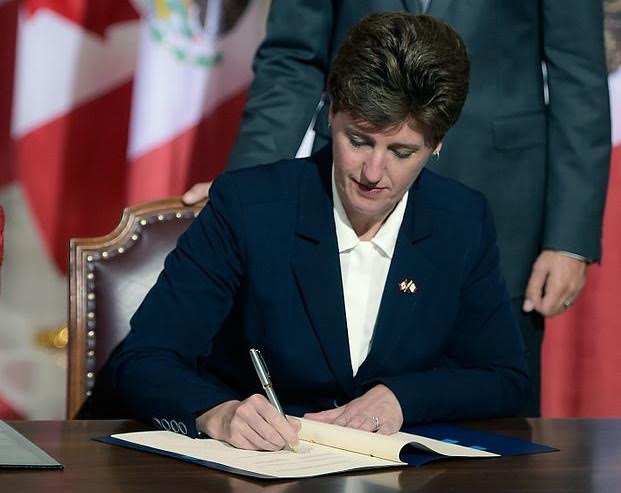Since the 2008 financial crisis, Emerging Market (EM) economies have been the major drive of economic growth; however, the engine behind the growth is beginning to sputter. Of the BRICS countries (Brazil, Russia, India, China, South Africa) who contribute 20% of global GDP, Brazil and Russia are both in recession while China has experienced dramatic slowing of GDP growth. This year marking a six year declining trend, nonetheless, this has been exacerbated in recent times with global GDP forecast to grow 3.5%, up only 0.1% from last year.
Some factors impacting EM performance are idiosyncratic circumstances that are geopolitical in nature or related to internal mismanagement of fiscal and monetary policy. Russia, which is heavily dependent on oil exports, is suffering from the fall in commodities prices which is not helped by the trade sanctions imposed on it by the West in response to their military involvement in Ukraine. The Brazilian recession can be traced back to high rates of inflation, fiscal deficit, a current account deficit resulting in depreciation of the Brazilian real meaning higher import costs, a drought in the Southeast and corruption scandals involving the country’s largest oil company Petrobras which has dented the credibility of the energy sector.
Weak demand in major developing markets is having implications on global markets, in particular China, which is undergoing a deflation of its property market bubble resulting in a decline in construction levels. The effect of China´s lower demand is evident in Latin American performances as they are dependent on the export of the commodities that fueled China´s initial property boom and with lower demand, commodity prices have been further dampened. The reduction in demand across the EM countries has consequences that are cyclical in nature, with lower demand meaning lower commodity and manufacturing exports which further hurt economic growth. Export contractions in turn mean reductions in imports to correct trade imbalances, perpetuating low demand. In Russia´s case, its low demand is having a negative impact the trade balances of the countries in the Commonwealth of Independent States (CIS) and Eastern European countries. Low demand in major markets is hurting manufacturing based EM economies as well through weakened supply chains.
Further complicating the slowdown in the Chinese real estate market is the copious amount of debt used to finance the boom. Chinese investors borrowed at low interest rates abroad and through risky financial products. Debt surges have done well to finance EM growth rates thus far, but with lower growth expectations, investors are finding elsewhere to invest, resulting in capital outflows which compound the problem of added debt. The EM sovereign bond markets are finding it more difficult to access debt to stimulate demand since lower EM growth rates are causing EM bonds to be seen as more risky with a higher chance of default. This is occurring while the global bond market conditions are experiencing relatively low liquidity.
 EM economies have taken the stance that developed markets should do more to stimulate global growth. Despite low oil prices, developed countries have not passed on the reduction in price to consumers to increase demand since they either reduced subsidies or increased taxation. Moderate growth in the developed economies has also increased the potential for the US Federal Reserve to increase interest rates, potentially making the US bond market a more attractive option yielding higher returns with lower risk. Higher interest rates would also restrict credit access by raising the benchmark London interbank offered rate (Libor), and since bank loan rates are typically based on Libor plus some margin, interest rate hikes will be passed on to growing businesses in the EM economies. EM companies depend especially on debt to finance business projects and with low export rates cutting into profit margins, the Federal Reserve´s increasing interest rates would not help.
EM economies have taken the stance that developed markets should do more to stimulate global growth. Despite low oil prices, developed countries have not passed on the reduction in price to consumers to increase demand since they either reduced subsidies or increased taxation. Moderate growth in the developed economies has also increased the potential for the US Federal Reserve to increase interest rates, potentially making the US bond market a more attractive option yielding higher returns with lower risk. Higher interest rates would also restrict credit access by raising the benchmark London interbank offered rate (Libor), and since bank loan rates are typically based on Libor plus some margin, interest rate hikes will be passed on to growing businesses in the EM economies. EM companies depend especially on debt to finance business projects and with low export rates cutting into profit margins, the Federal Reserve´s increasing interest rates would not help.
The counterargument is that the central banks of EM economies need to step up their own efforts to stimulate growth by adjusting monetary policy to cut interest rates and to stimulate lending by making borrowing from banks cheaper. EM countries experiencing declines in inflation could also take more initiative to reinflate prices to help domestic businesses.
The current situation erodes the confidence placed on the EMs to sustain high global growth rates. It is also shows increasing interdependence between developing and developed markets in sustaining high growth rates. With 43% of global trade coming from the top 17 developing countries, the increasing wealth of EM economies should be met with increasing responsibility for economic development. However, the inherently higher risk exposure involved with EM development should also be considered with careful cooperation between developing and developed economies.





